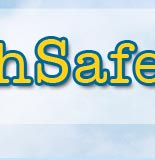 |
 |
 |
 |
 |
 |
|||||||||
Join our mailing list and receive updates about our activities. |
|
1. The earlier an intervention is instituted, the more likely it is to be effective. |
2. Identifying “high risk” children based on a single marker such as “acting out behaviors” often misidentifies many children and underestimates females. There is a need to use multiple sources of information when identifying students at risk. |
3. The factors that place children at risk are multifaceted and are unlikely to be modified by relatively brief, time-limited interventions. Intensive interventions are required for children with multiple high risk factors. |
4. Single factor-focused interventions are not likely to be successful. It is important to target multiple risk and protective resources. There are no simple “magic bullet” solutions. |
5. Use research-based interventions and make sure that they are correctly implemented. |
6. Interventions that are conducted across multiple settings (school, home, community) are more effective than single setting interventions. |
7. Interventions should be comprehensive. They should span multiple settings (home/school) and should involve multiple social agents (teachers, parents, peers.) |
8. Universal prevention programs alone are generally not of sufficient intensity to have a desirable effect on high-risk children. |
9. It is important to combine universal, selected and targeted approaches in multi-component and multi-year interventions in order to have highly positive effects. |
10. There is a need to involve prosocial peers as part of the intervention. Interventions that involve only “high risk” children and adolescents may do more harm, and inadvertently, increase the rate of violence. |
11. Skills-oriented intervention programs should build in generalization training from the outset and explicitly train for transfer. |
12. Combined school and family programs yield more benefits than those programs implemented in isolation from each other. |
13. Parent management training is one the most effective interventions with oppositional and conduct disorder children/youth. However, parents of children with Disruptive Behavior Disorders have high “no show” rates. A promising alterative is to conduct an active home-based intervention program. It is important to focus on engagement procedures with parents and possible barriers from the outset and continue it throughout training. |
14. Family-focused preventative efforts have a greater impact than intervention strategies that focus on either children or parents. |
15. Interventions need to be sensitive to cultural, racial, gender and developmental differences. |
16. Interventions should build on participants’ strengths, be collaborative and employ a guided participation model. Interventions should use varied teaching methods. |
17. Inadequate parental supervision and lack of parent involvement are strong predictors of future antisocial behavior and delinquency. As a result, parent training is critical. However, parents alone cannot provide supervision to adolescents. Therefore, supervision and involvement are required by caring adults outside the family. |
18. Community-based interventions that include policy changes and media campaigns need to be added to family, peer and school components. |

This web site has been produced by The Melissa Institute for Violence Prevention and Treatment to provide research-based school violence prevention procedures for educators. The web site has been made possible with the generous support of the Robert and Renee Belfer Foundation and other supporters. |
 |
The Melissa Institute for Violence Prevention and Treatment to provide research-based school violence prevention procedures for educators Terms and Conditions |
|
